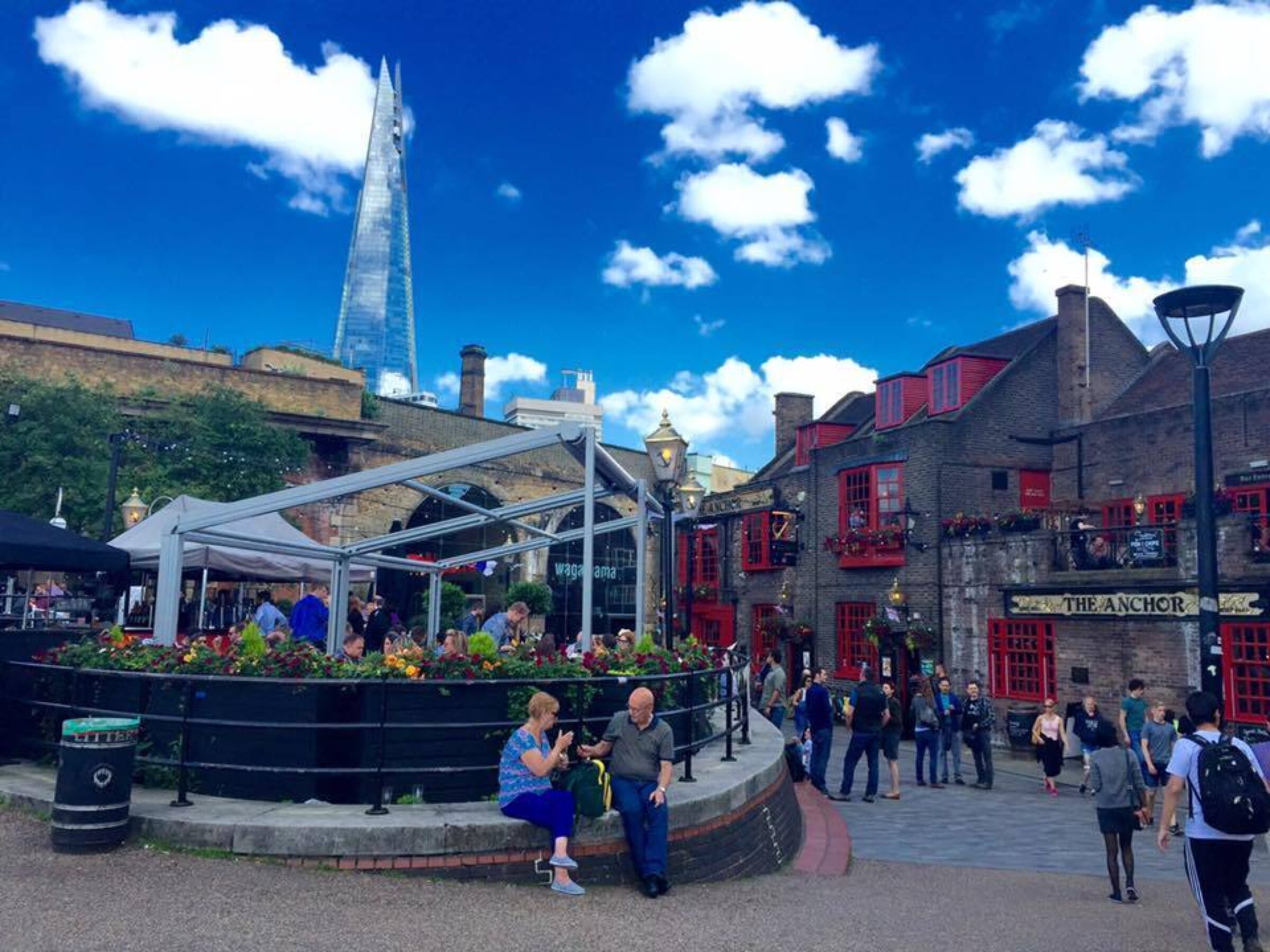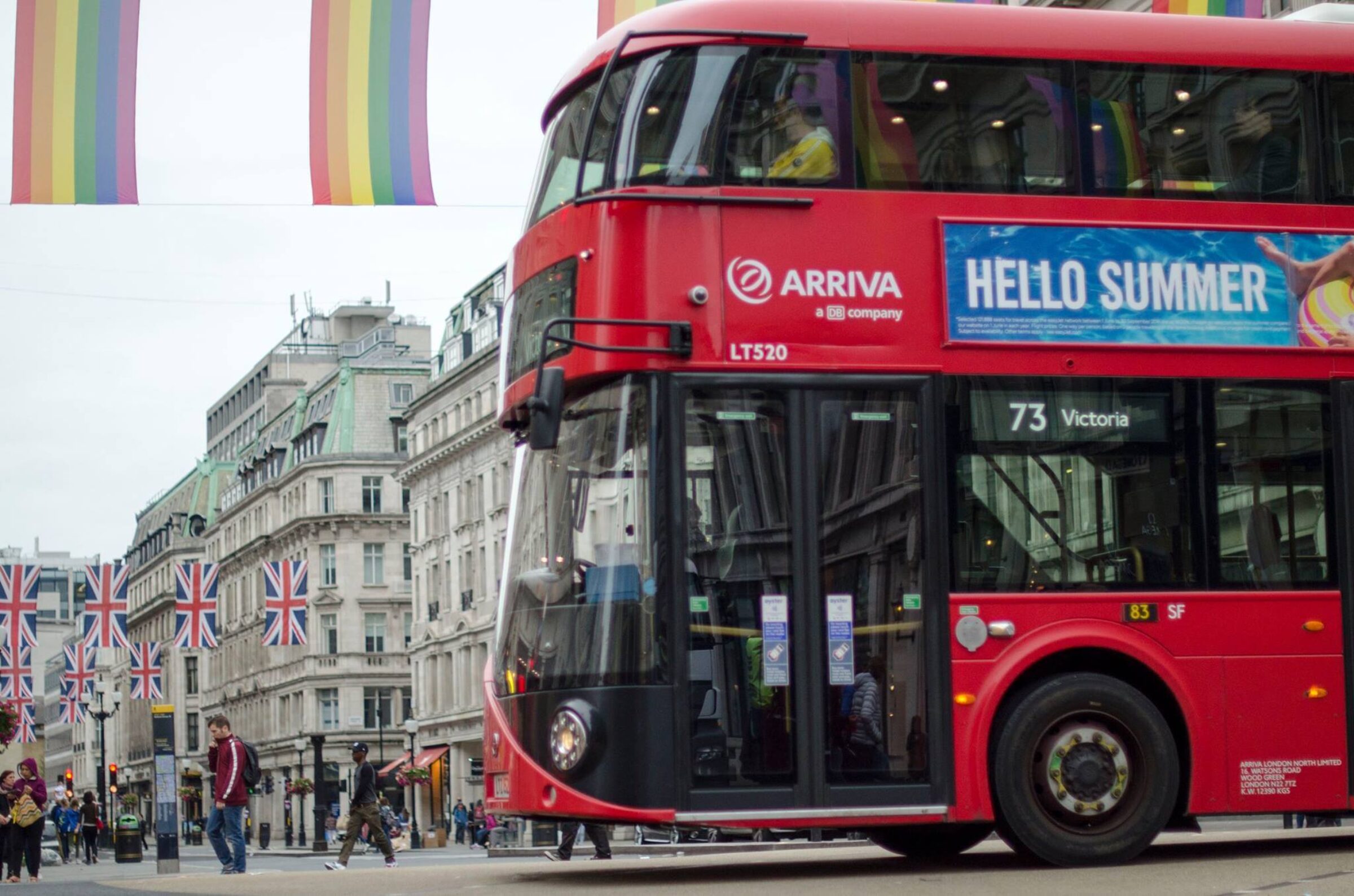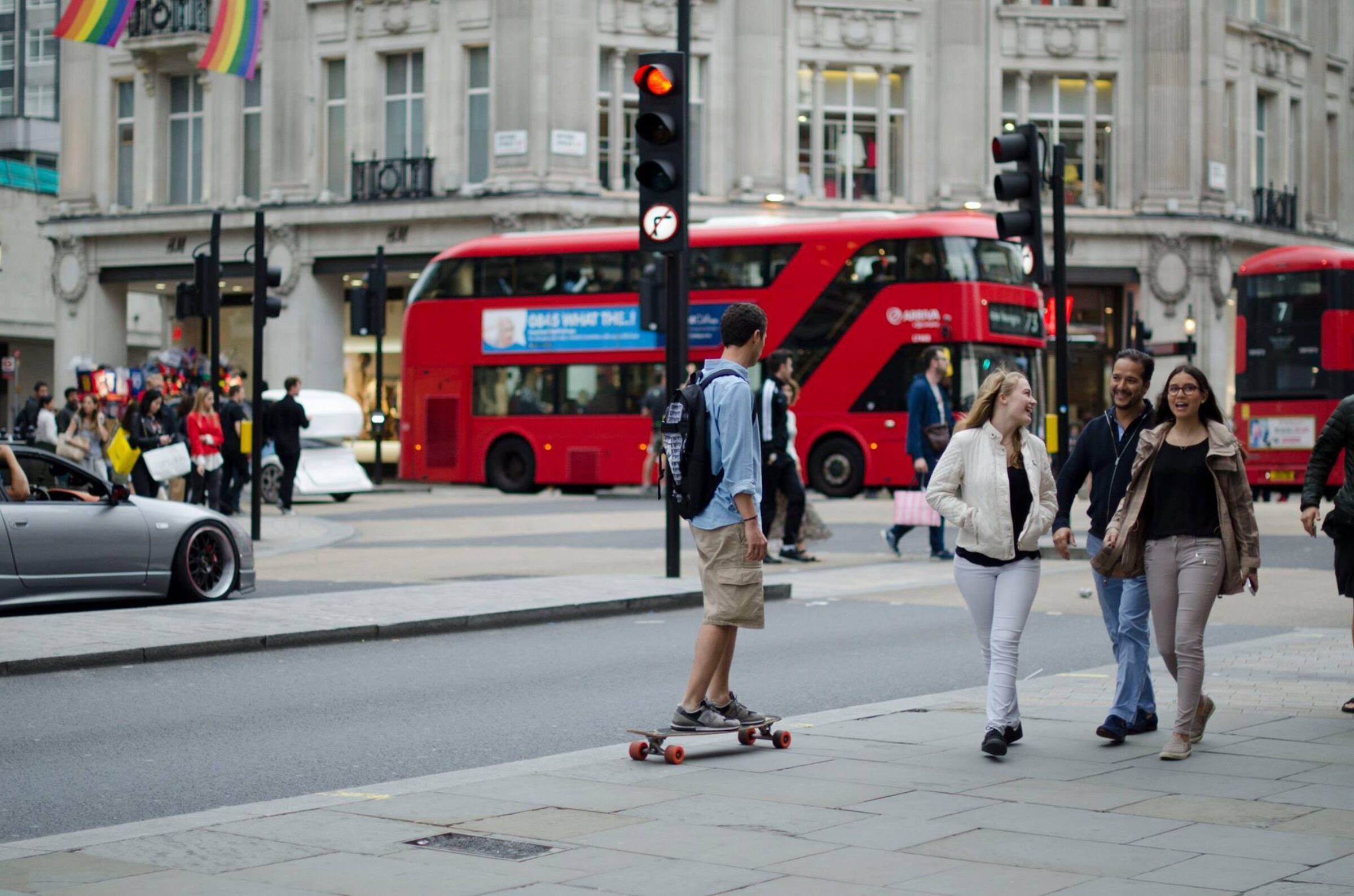The History of Popular British Music, Part 2

By Rachel Rowland ( ABC School’s Academic Coordinator )
British music has influenced the lives of so many people. Artists like David Bowie and Queen have provided the soundtrack to the lives of many, including my own, over the years. These influential artists changed music forever but also had a huge impact on what we wear, with their unique sense of style, and also changed the way we see the world through their own unique perceptions. Last month we took a look at rock and roll, punk rock, skinheads and beat music. Let’s continue with the same theme by looking at some of the other music genres which have had a huge impact on the world.
Glam Rock
Glam rock is a style of music that developed in the U.K in the early 1970s and continued and evolved into the 1980s and beyond. British glam rock artists like David Bowie, Elton John, Freddie Mercury and Marc Bolan were male musicians who wore make-up, and often female clothing, as well as body glitter to add more glamour to their look. These artists were very theatrical and going to one of their concerts was as much about the production as it was about the music. Many people at the time believed that these artists were rebelling against the mainstream rock genre of the late 1960s and the other sub-cultures which had developed around the same time. They wanted to use diverse sources of music to break tradition and to create a whole new sound. They used pop, rock and roll, hard rock, psychedelic and art rock and science-fiction, amongst other influences, to create a unique image, one which permitted young people to begin to play with the idea of androgyny, which means to have a combination of both male and female characteristics. Many artists today are still heavily influenced by the music and style of the glam rock era. These artists told us that we can be whatever we want to be and their message certainly did change the world.
 Britpop
In the early 1990s, a U.K based music and culture movement called Britpop emerged onto the music scene. Bands like Blur, Elastica, Suede and Oasis produced alternative rock music which had a distinctly British sound. Elements from the British pop music of the 1960s, such as The Beatles and The Kinks, could be seen within the musical sound and style of the artists. Britpop was characterised by guitar-driven, catchy tunes. Catchy tunes are songs that you hear and cannot help but sing along to. One thing that was clear about the different artists was their need to display their local identity and regional accents. The Britpop image was British and working class and something called lad culture emerged from this image and became a large part of the movement. Lad culture refers to young men behaving in a very macho way, getting drunk, often behaving in an offensive and/or rebellious way. There was a huge rivalry between the two main Britpop bands, Oasis and Blur. Blur were from London and Oasis were from Manchester. The media made a big deal out of the battle between the two bands. Each band wanted to sell more records than the other and were often hostile or extremely rude about each other’s music. Back in those days, as a twenty-something university student, I remember clearly that you could either be a Blur fan or an Oasis fan, but not both.
Grime music
At the beginning of the 2000s, a new style of electronic dance music emerged from working class estates in East London and was heavily influenced by hip-hop, reggae, jungle, drum and bass and U.K garage music, and this new style was called grime. Artists such as Dizzee Rascal, Stormzy and Ms. Dynamite are big names associated with this genre. The popularity of this music has grown massively in the United Kingdom, but took longer to appeal to larger audiences outside of the U.K. Now, grime music is connecting fans around the world, having once been a uniquely British phenomenon with a powerful underground influence for the best part of ten years, it is now one of the biggest selling music genres in recent years. Partly, this change in popularity is due to collaborations with well-known artists such as Ed Sheeran and Little Mix.
I hope you have enjoyed reading about some of the most popular bands and artists to emerge onto the British music scene since the 1950s. Unfortunately, there simply isn’t enough time to talk about all of the other amazing music that this country has produced but I hope that these articles have inspired you to learn more about music in general and hope that you consider widening your music tastes by listening to some of the music you have learnt about over the past few months. Happy listening!
Britpop
In the early 1990s, a U.K based music and culture movement called Britpop emerged onto the music scene. Bands like Blur, Elastica, Suede and Oasis produced alternative rock music which had a distinctly British sound. Elements from the British pop music of the 1960s, such as The Beatles and The Kinks, could be seen within the musical sound and style of the artists. Britpop was characterised by guitar-driven, catchy tunes. Catchy tunes are songs that you hear and cannot help but sing along to. One thing that was clear about the different artists was their need to display their local identity and regional accents. The Britpop image was British and working class and something called lad culture emerged from this image and became a large part of the movement. Lad culture refers to young men behaving in a very macho way, getting drunk, often behaving in an offensive and/or rebellious way. There was a huge rivalry between the two main Britpop bands, Oasis and Blur. Blur were from London and Oasis were from Manchester. The media made a big deal out of the battle between the two bands. Each band wanted to sell more records than the other and were often hostile or extremely rude about each other’s music. Back in those days, as a twenty-something university student, I remember clearly that you could either be a Blur fan or an Oasis fan, but not both.
Grime music
At the beginning of the 2000s, a new style of electronic dance music emerged from working class estates in East London and was heavily influenced by hip-hop, reggae, jungle, drum and bass and U.K garage music, and this new style was called grime. Artists such as Dizzee Rascal, Stormzy and Ms. Dynamite are big names associated with this genre. The popularity of this music has grown massively in the United Kingdom, but took longer to appeal to larger audiences outside of the U.K. Now, grime music is connecting fans around the world, having once been a uniquely British phenomenon with a powerful underground influence for the best part of ten years, it is now one of the biggest selling music genres in recent years. Partly, this change in popularity is due to collaborations with well-known artists such as Ed Sheeran and Little Mix.
I hope you have enjoyed reading about some of the most popular bands and artists to emerge onto the British music scene since the 1950s. Unfortunately, there simply isn’t enough time to talk about all of the other amazing music that this country has produced but I hope that these articles have inspired you to learn more about music in general and hope that you consider widening your music tastes by listening to some of the music you have learnt about over the past few months. Happy listening!
 Britpop
In the early 1990s, a U.K based music and culture movement called Britpop emerged onto the music scene. Bands like Blur, Elastica, Suede and Oasis produced alternative rock music which had a distinctly British sound. Elements from the British pop music of the 1960s, such as The Beatles and The Kinks, could be seen within the musical sound and style of the artists. Britpop was characterised by guitar-driven, catchy tunes. Catchy tunes are songs that you hear and cannot help but sing along to. One thing that was clear about the different artists was their need to display their local identity and regional accents. The Britpop image was British and working class and something called lad culture emerged from this image and became a large part of the movement. Lad culture refers to young men behaving in a very macho way, getting drunk, often behaving in an offensive and/or rebellious way. There was a huge rivalry between the two main Britpop bands, Oasis and Blur. Blur were from London and Oasis were from Manchester. The media made a big deal out of the battle between the two bands. Each band wanted to sell more records than the other and were often hostile or extremely rude about each other’s music. Back in those days, as a twenty-something university student, I remember clearly that you could either be a Blur fan or an Oasis fan, but not both.
Grime music
At the beginning of the 2000s, a new style of electronic dance music emerged from working class estates in East London and was heavily influenced by hip-hop, reggae, jungle, drum and bass and U.K garage music, and this new style was called grime. Artists such as Dizzee Rascal, Stormzy and Ms. Dynamite are big names associated with this genre. The popularity of this music has grown massively in the United Kingdom, but took longer to appeal to larger audiences outside of the U.K. Now, grime music is connecting fans around the world, having once been a uniquely British phenomenon with a powerful underground influence for the best part of ten years, it is now one of the biggest selling music genres in recent years. Partly, this change in popularity is due to collaborations with well-known artists such as Ed Sheeran and Little Mix.
I hope you have enjoyed reading about some of the most popular bands and artists to emerge onto the British music scene since the 1950s. Unfortunately, there simply isn’t enough time to talk about all of the other amazing music that this country has produced but I hope that these articles have inspired you to learn more about music in general and hope that you consider widening your music tastes by listening to some of the music you have learnt about over the past few months. Happy listening!
Britpop
In the early 1990s, a U.K based music and culture movement called Britpop emerged onto the music scene. Bands like Blur, Elastica, Suede and Oasis produced alternative rock music which had a distinctly British sound. Elements from the British pop music of the 1960s, such as The Beatles and The Kinks, could be seen within the musical sound and style of the artists. Britpop was characterised by guitar-driven, catchy tunes. Catchy tunes are songs that you hear and cannot help but sing along to. One thing that was clear about the different artists was their need to display their local identity and regional accents. The Britpop image was British and working class and something called lad culture emerged from this image and became a large part of the movement. Lad culture refers to young men behaving in a very macho way, getting drunk, often behaving in an offensive and/or rebellious way. There was a huge rivalry between the two main Britpop bands, Oasis and Blur. Blur were from London and Oasis were from Manchester. The media made a big deal out of the battle between the two bands. Each band wanted to sell more records than the other and were often hostile or extremely rude about each other’s music. Back in those days, as a twenty-something university student, I remember clearly that you could either be a Blur fan or an Oasis fan, but not both.
Grime music
At the beginning of the 2000s, a new style of electronic dance music emerged from working class estates in East London and was heavily influenced by hip-hop, reggae, jungle, drum and bass and U.K garage music, and this new style was called grime. Artists such as Dizzee Rascal, Stormzy and Ms. Dynamite are big names associated with this genre. The popularity of this music has grown massively in the United Kingdom, but took longer to appeal to larger audiences outside of the U.K. Now, grime music is connecting fans around the world, having once been a uniquely British phenomenon with a powerful underground influence for the best part of ten years, it is now one of the biggest selling music genres in recent years. Partly, this change in popularity is due to collaborations with well-known artists such as Ed Sheeran and Little Mix.
I hope you have enjoyed reading about some of the most popular bands and artists to emerge onto the British music scene since the 1950s. Unfortunately, there simply isn’t enough time to talk about all of the other amazing music that this country has produced but I hope that these articles have inspired you to learn more about music in general and hope that you consider widening your music tastes by listening to some of the music you have learnt about over the past few months. Happy listening!














